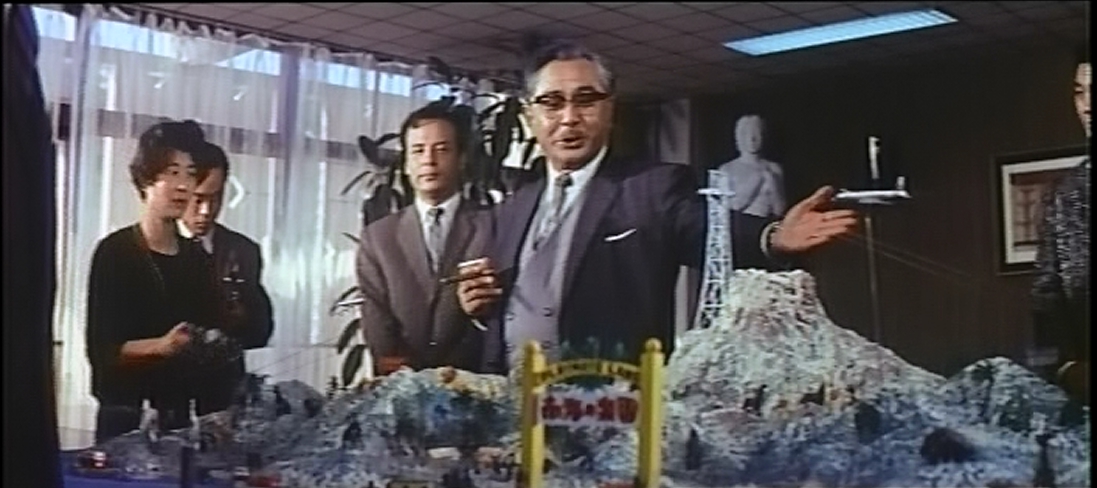
As with Godzilla vs Mothra, the motivator for the plot of the greedy industrialist, in this case the publisher of Playmate magazine. He's bought the island outright, so the indigenous people are going to have to move. The irony is that Nikkatsu was converting itself to producer of soft-core "pink" films.
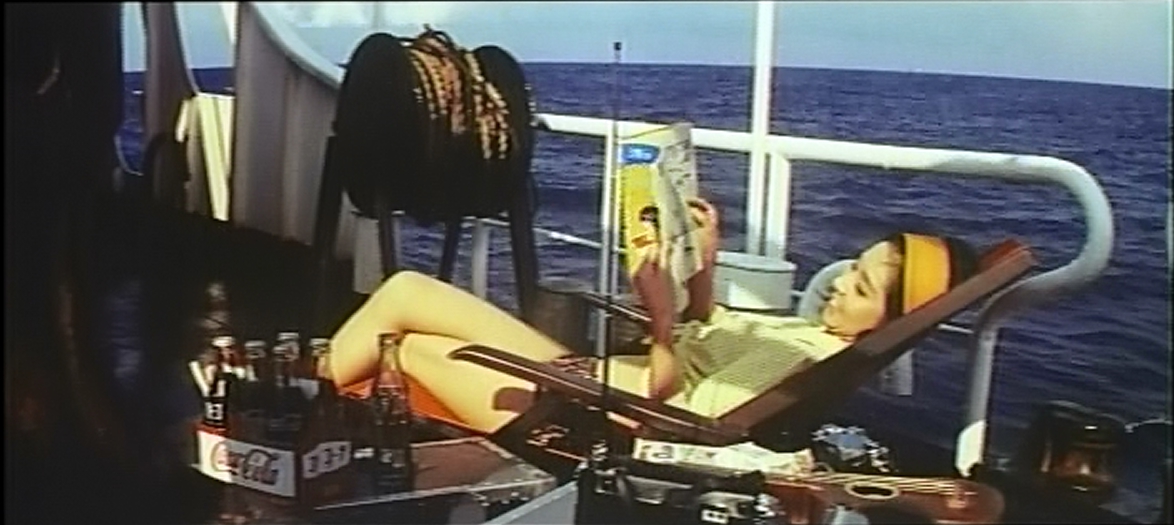
Gappa is the god of Obelisk Island (which joins the archipelago of monster-infested locations such as Odo Island, Infant Island, Devil's Island and Sollgel Island. Nara Island is, of course, in the Atlantic). But the Pacific is large, and jamming one more island in there won't really be noticeable. The natives could have stepped out of either King Kong vs Godzilla or Gamera vs Barugon. The women dance with spears and shields while the men wear breechclots in tartan and other patterns.
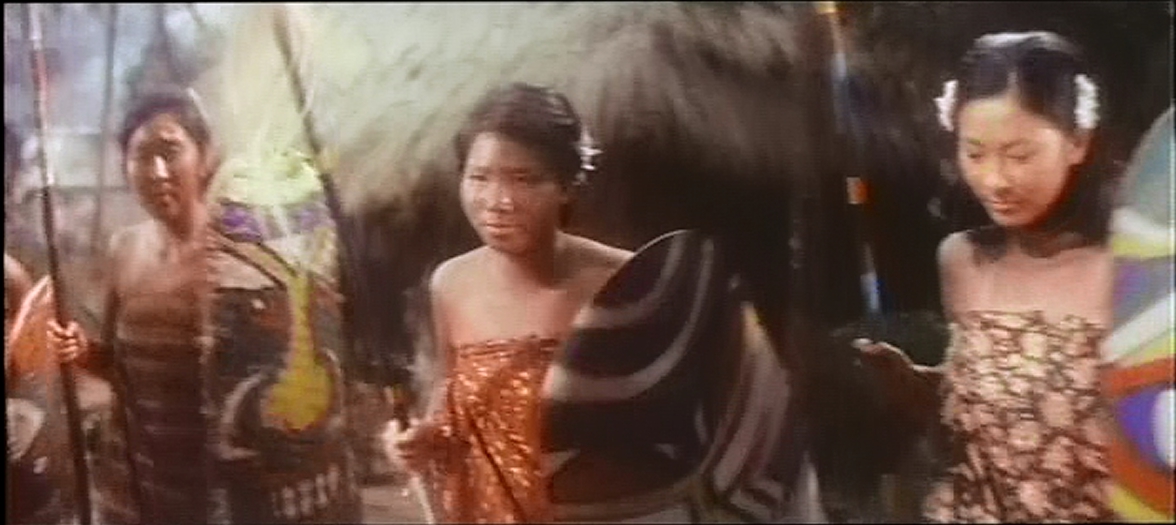
The story itself is well-cribbed from Gorgo. The explorers come to Obelisk Island and capture the immature Gappa. The greedy industrialist intends to put it on display, but this plan is interrupted by the arrival of the parents.
Gappa also includes the era-obligatory child protagonist, Saki here. While not nearly as annoying as many of the Gamera kids, he's in the mould of Sean. He's the connection to the island culture, and the one person, in addition to the only women on the expedition, Itoko, who feels any sympathy for the baby Gappa before its parents begin stomping the city.
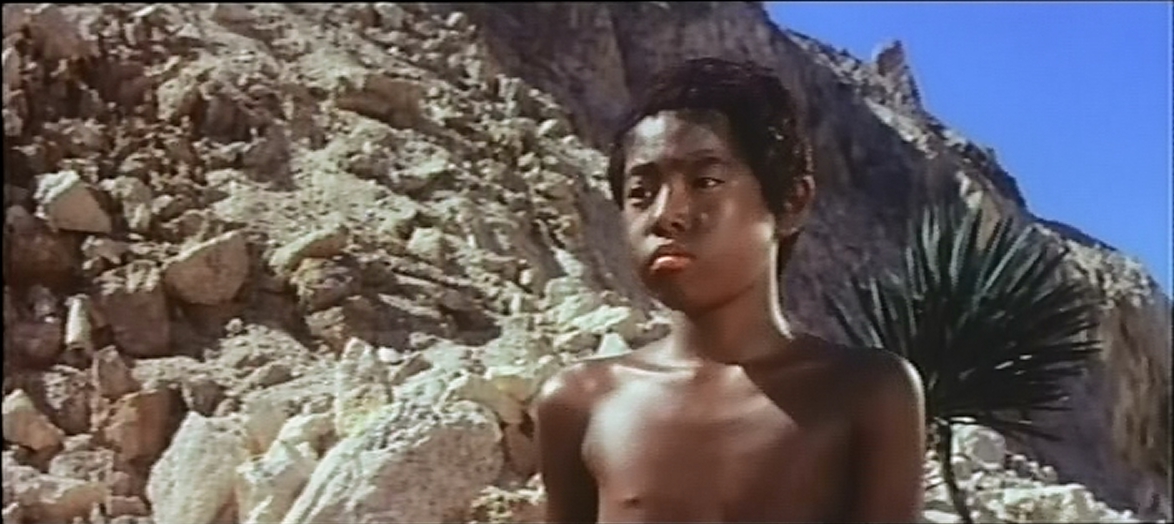
Baby Gappa isn't actually put on display, as it was in Gorgo. Instead, there's some medical experimentation, including making it wear some very strange headgear, to measure the brain waves. This again echoes Gorgo, as well as Minilla, and is a template for the discovery of Godzilla, Jr, from the Heisei series' 1993 Godzilla vs Mechagodzilla.
.
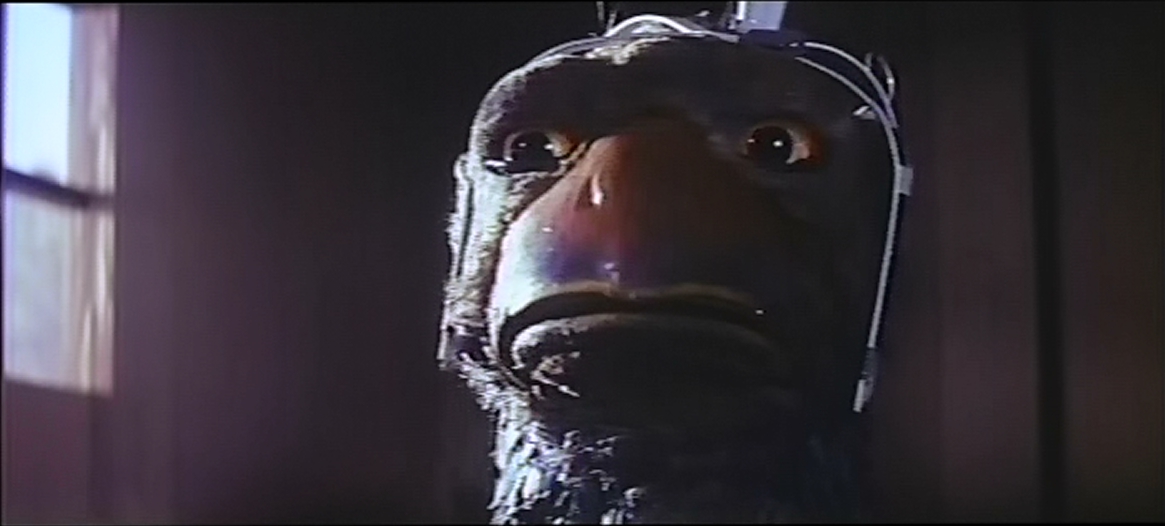
The suits are pretty good. Effects director Akira Watanabe, who worked with Eiji Tsuburaya on Godzilla and and dozen other kaiju films, created the Gappa costumes out of latex, rather than the cloth-based costimes from Daiei. He made some very thoughtful choices. The adult Gappa display sexual dimorphism, the crests on the male and female creatures are different. When the Gappa first appear, one of them is carrying a large octopus in its mouth, which I assume is to feed the baby Gappa. So despite feeling like it was assembled out of ideas from other films, Gappa has a certain amount of originality, and a bit more depth than many films of the period. Which is why I find Gappa, despite the B-plot elements, to be watchable.
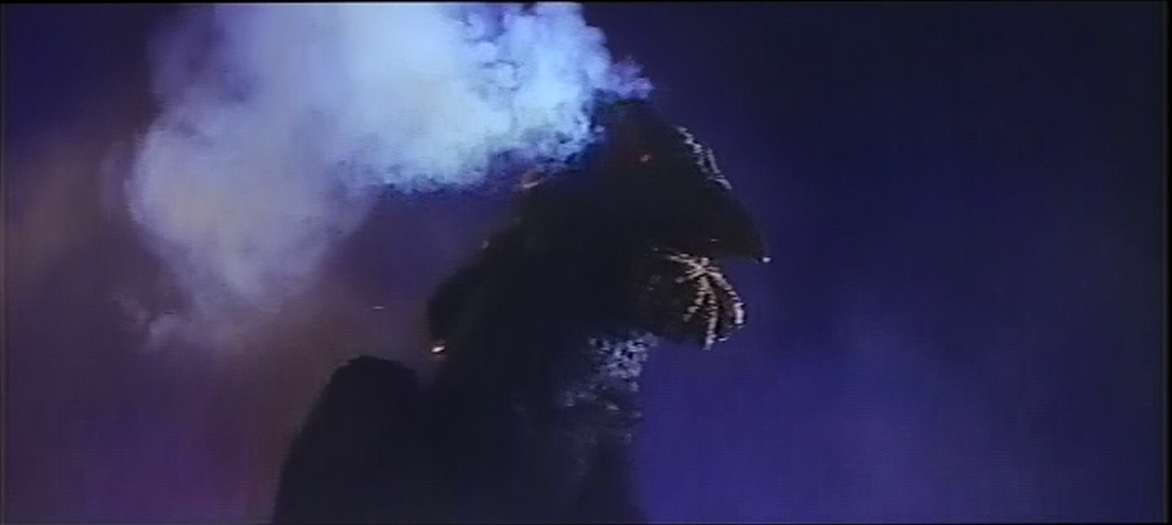
Like Godzilla, the Gappa have some sort of breath weapon, and they uleash it on tanks, first. Like Gorgo, the Gappa are not nuclear mutants. More like Mothra, they are unappeased gods on their own islands. Very little is explained in the film, where they came from, what their breath weapons actually are. But by this time, the monster film audience had likely seen enough monster films thast an explanation was unnecessary. Monsters have some sort of breath weapon.
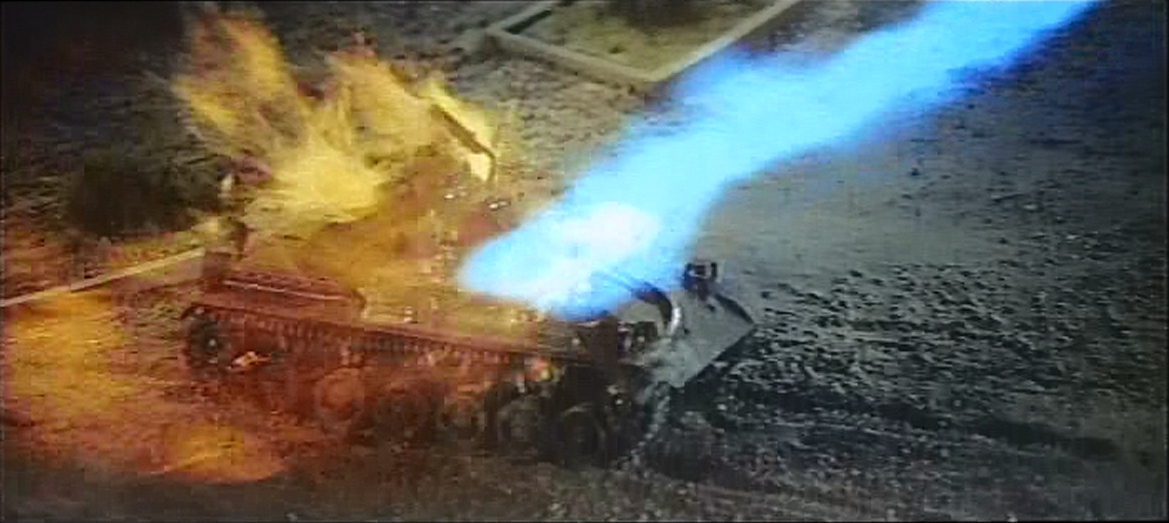
The Gappa combine the size and heat ray of Godzilla with the flight of Rodan, making them very difficult to pin down. They also can breathe underwater, which is what inspired the "triphidian" title from the American DVD release. They hide in a lake while Playmate is selling a crapload of copies, even as the publisher holds the baby Gappa and denies responsibility for the Gappas' rampage. The humans are not sympathetic in this film; the monsters are.
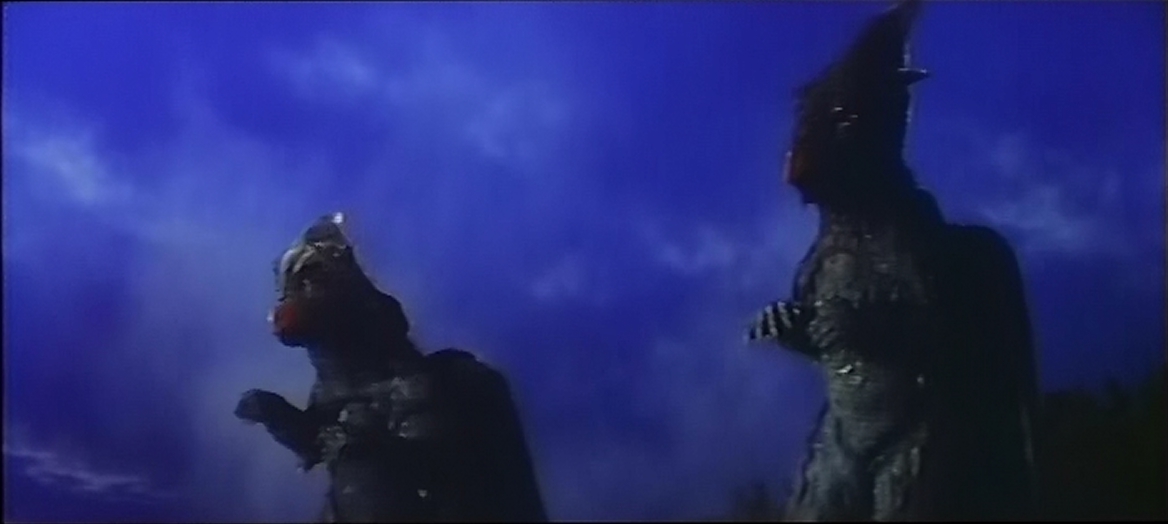
After a bit of stomping the Gappa retire to a lake within sight of Mt. Fuji. The military decide to dislodge the Gappa with high-frequency sound and launch missiles at them when they emerge. While the idea is good, the execution is rather strange. They send boats out into the lake, and then sink them to bring the sound below the surface. I suppose an underwater speaker would have done, but the boats look pretty cool as they sink into the water. It succeeds, and the Gappa come out, ignore the missile surprise waiting for them, and head straight for long-suffering Tokyo.
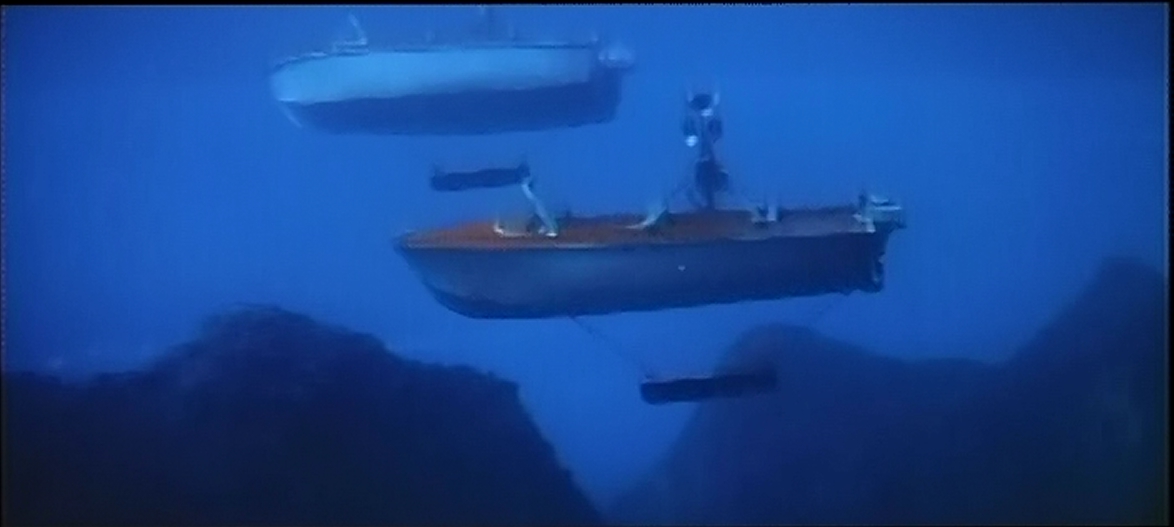
In an attempt to forestall the destruction, baby Gappa is flown to the Tokyo airport in a helicopter and balloon contraption that looks a bit like a modified Kong-moving rig from King Kong vs Godzilla.
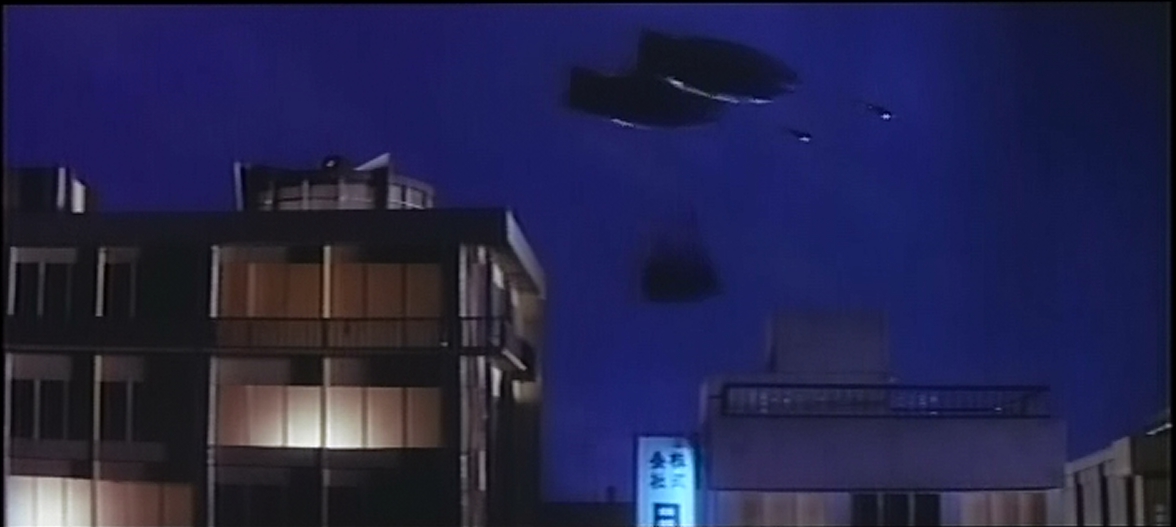
At the airport, the monster family is reunited, and manages to do so in a way that is sweet, without being nauseating. Taking its cute from Gorgo, Gappa aims at children but doesn't pander to them, leaving us with a watchable film that doesn't treat us as if we were intellectually and emotionally stunted. Until the moment that they ruin it by having the token woman decide that she wants to give up her career and have babies. In keeping with the theme of the importance of family, I suppose, but a little hard to take forty-five years later.
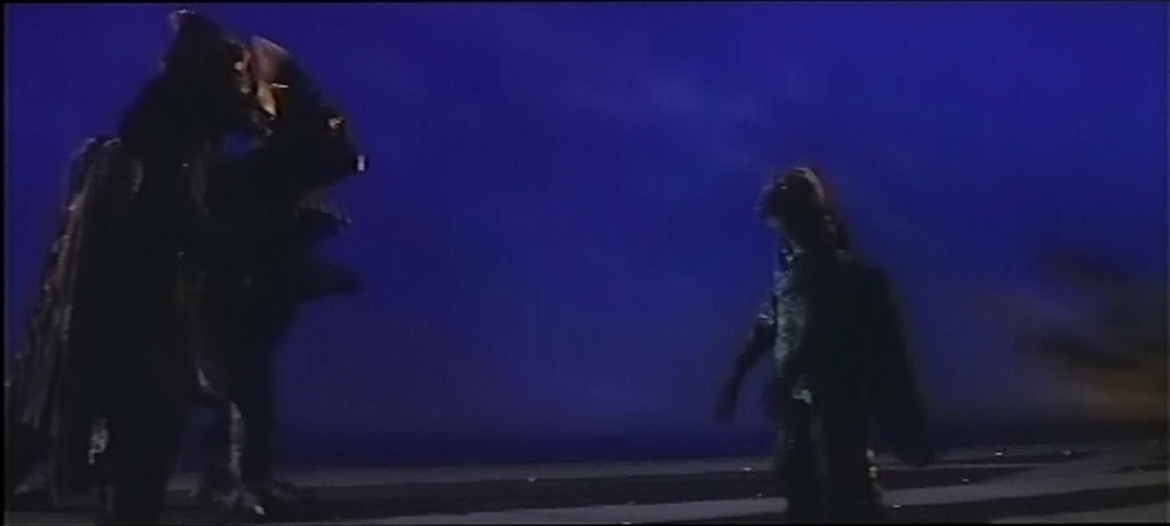
Overall, Gappa is a pretty good giant monster film. It moves along at a decent clip, the kid doesn't get a lot of screen time, and the human subplot is inoffensive (except that last bit). I've watched this more times than any of the Gamera films, and more than several Godzilla films. These pictures were taken from the Tokyo Shock version, which isn't a fantastic transfer, but for the subbed version, this is the only option. The monster sequences are dark, and they have significant more scratching than the non special effects sections. I hope that with the success of Pacific Rim and the anticipated success of Godzilla 2014, we'll be able to get several of the more obscure films onto a good transfer, whether on DVD or Blu-Ray.
Next, we move out of Japan, but not out of Asia. The overly-familiar Yonggary, next week on My Week of Monsters.
No comments:
Post a Comment